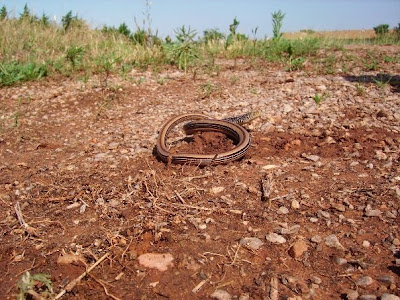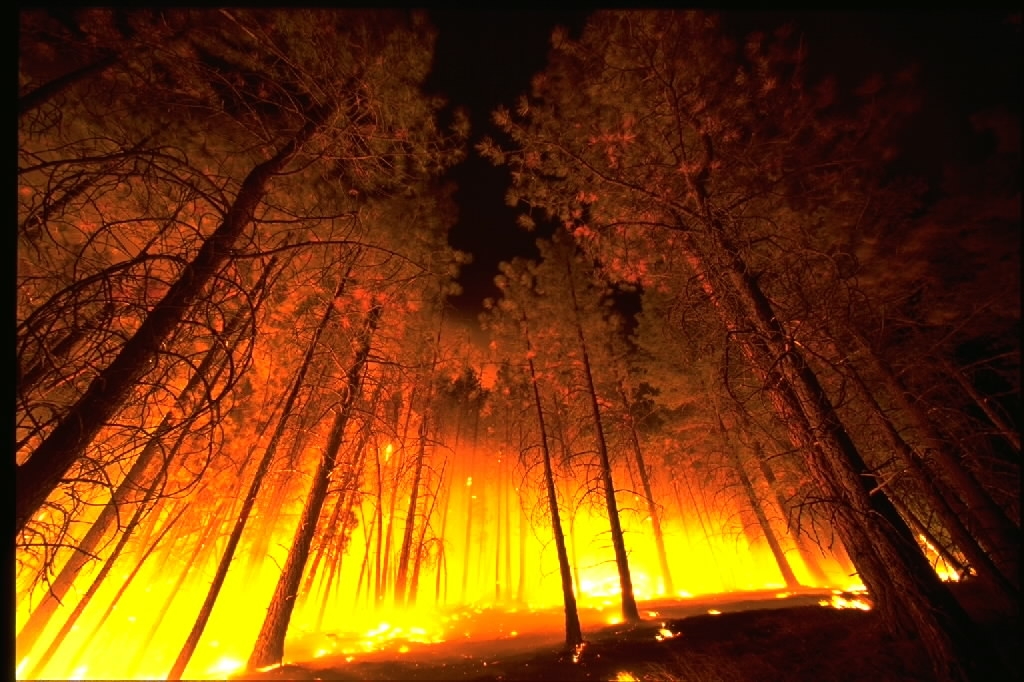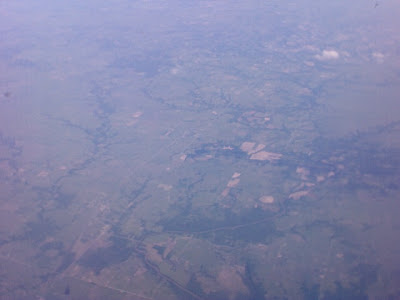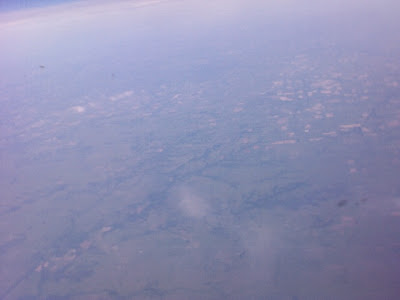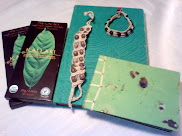I found a book on creating prairie gardens, and it had this really cool drawing of a planting that was laid out on a grid, with different species planted in randomly selected blocks. So, I took one of the areal pictures of the pond and the surrounding wetland area and laid a grid over it to make what I call a "design grid." Its like graph paper for landscapes! Justin is coming up with a wildflower mix for us to plant, poring through catalogs, native plant lists, and growth charts to come up with something that will grow in full sun, enjoys wet areas, and will bloom through out spring, summer, and fall. In other words, we're having a raging good time.
After our design session, we went out to look at the sites we need to seed before we get too far into June. John showed us how to tell a good site from one that needs to be mowed, cleared, and seeded. The strategy is to get a decent stand of native grasses all over the place and worry about the wildflower component later. Bruce mowed, Justin used the lawn sweeper, and I had a rake to get the small stuff. Ten minutes in, Justin drove the lawn sweeper into a hole that was covered up by grass clippings. As we were trying to fix it, Bruce had the idea of borrowing a big blower that we could use to uncover future holes. Turns out, the massive backpack blower is just as good or better at removing grass clippings than the sweeper! That thing was amazing, like having the power of Wind in your hands. We got the sweeper fixed and prepped a decent amount of area before heading home.
As I was driving the sweeper (max speed 5 mph) back to the shed, I had an epiphany: I am doing exactly what I want to be doing in life. Keep the mix of design, management, and direct work going, and I'm gonna be one happy little Restorationist.
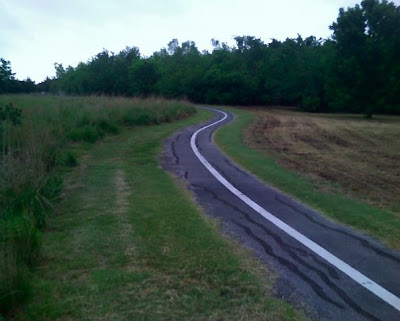 From left to right: Restored native grass (about 3 yrs old) native buffalo turfgrass buffer around trail, area we just seeded with native grasses
From left to right: Restored native grass (about 3 yrs old) native buffalo turfgrass buffer around trail, area we just seeded with native grasses Justin on the lawn sweeper, prepping some sites.
Justin on the lawn sweeper, prepping some sites.
 My farmer shadow.
My farmer shadow.






